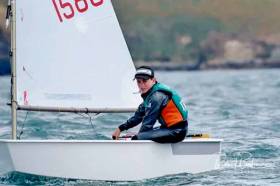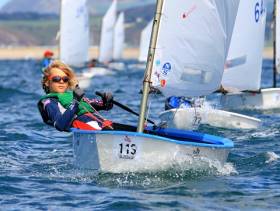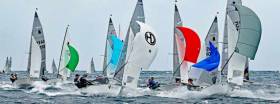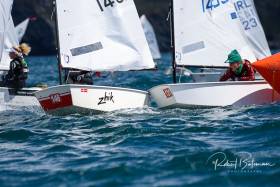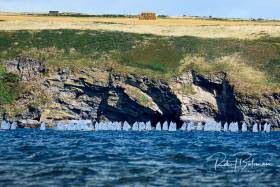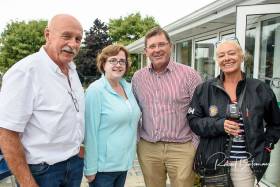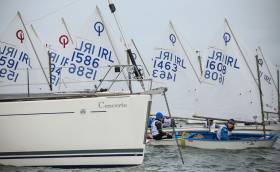Displaying items by tag: Optimist
Kinsale’s James Dwyer Matthews Wins British Optimist Spring Opens from 155 Boats, While Howth’s Luke Turvey is third
James Dwyer Matthews (15) of Kinsale and Luke Turvey (13) of Howth have led the charge for Ireland in the 155-boat International Optimist British Spring Opens at Lymington, with both on the podium at the finish yesterday evening – Matthews taking first and Turvey taking third.
The Irish Optimist class is certainly on a roll these days with a particularly strong travelling contingent – no less than 28 Irish helms made the long trek to the Solent, but it was well worth the effort, as in addition to the two podia places, they’d four in the top ten with Sam Ledoux of the National placing 6th while Johnny Flynn of Howth/RStGYC was 7th.
The final results make for sweet reading here
Irish Optimist Sailors Sweep the Board in Under 12s at Kinsale Nationals But Lose out in Senior Opens By Two Points
The fantastic progress of Howth’s Under 12 Optimist star Rocco Wright continued at the Irish Nationals at Kinsale Yacht Club. But Justin Lucas of Kinsale and Tralee, having led the early stages of the series in the Senior Fleet, had to concede the overall win to lone Belgian sailor Guentin Borghis by just two points.
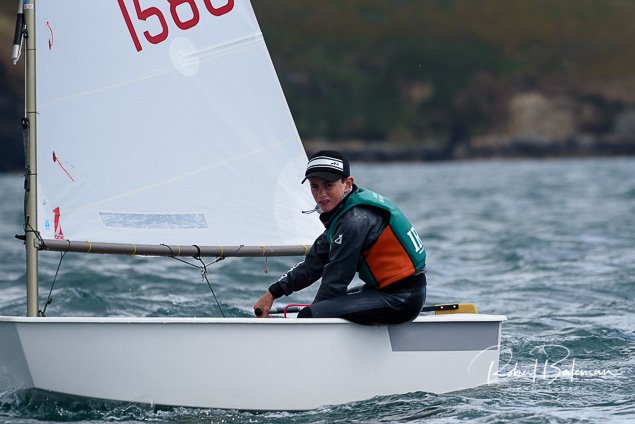 James Dwyer Matthews of Kinsale was one of three Irish helms battling for the senior win, but though he tied at second place two points behind the winner, on countback he was put in fourth. Photo: Robert Bateman
James Dwyer Matthews of Kinsale was one of three Irish helms battling for the senior win, but though he tied at second place two points behind the winner, on countback he was put in fourth. Photo: Robert Bateman
Justin Lucas swept back into contention by winning the final race when Borghijs was sixth, but the Cork sailor was carrying a 14th and 15th, having discarded a 47th and an OCS. However, with a final tally of 49 to the 47 of the Belgian, Lucas still took second overall and the Irish title on the count back against two other Irish helms also on 49, Luke Turvey of Howth and James Dwyer Matthews of Kinsale who placed 3rd and 4th in the Open Division, while Emily Riordan of Royal St George YC was top girl at 8th.
Results were much more clearcut in the Under 12s, where Rocco Wright’s scoreline included seven bullets and a 5th, with 6th and 9th discarded, putting him on just 15 points to the 41 of Ben O’Shaughnessy of Royal Cork. In a period of difficult weather, Kinsale's many options were fully exploited by Race Officer Peter Crowley to ensure that the programme was completed, while Kinsale YC’s hard-working voluntary team saw the fleet of 178 get afloat and then ashore with remarkable efficiency each day.
Results here
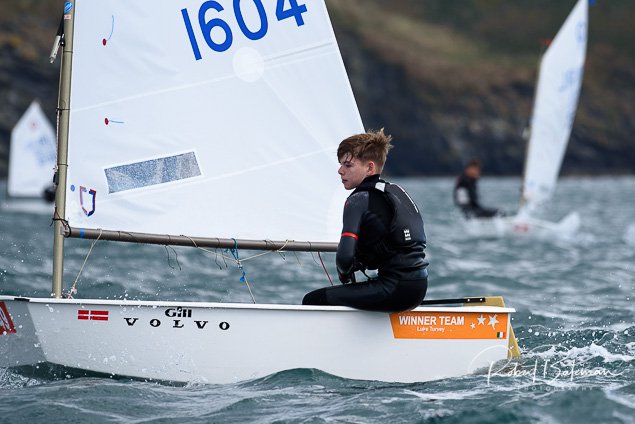 Luke Turvey of Howth was one of three heoms who tied on points for the Irish title, but moved to second on the count back. Photo: Robert Bateman
Luke Turvey of Howth was one of three heoms who tied on points for the Irish title, but moved to second on the count back. Photo: Robert Bateman
Additional reporting from Michelle Kennelly of Kinsale Yacht Club:
The Davy Optimist Irish National Championships took place in Kinsale 16 – 19 Aug. The weather decided to throw everything at the competitors and Race Committee with cloudy skies, gusts over 23 knots, fog and finally sunshine.
178 competitors took to the water spread across 3 fleets. The Regatta Fleet, with RO Denis Kieran, sailed in the waters off Charles Fort. 29 competitors sailed over the four days and enjoyed some competitive racing. 12 races were sailed and it was local member Tadgh Cronin, KYC, who prevailed and came first. Oliver Means, HSC was 2nd with Lucy Pitman, ESC, in third.
PRO Peter Crowley took the Junior and Senior Fleets out of the harbour to race in the area around the Bulman Buoy with the wind all weekend coming from the W and SW. There were 81 in the Junior Fleet and Rocco Wright, HYC/NYC, dominated from Race 1. He took a total of 7 line honours in the 11 races and ended 26 points clear ahead of the field. Oscar Morgan-Harris, RSYC, started Day 4 in 2nd place with Ben O’Shaughnessy, RCYC, in 3rd. However solid racing by Ben on Day 4 secured him an 8th and 3rd which was enough for him to take 2nd with Oscar 3rd.
The 68 strong Senior Fleet enjoyed very competitive racing with the overall leader changing daily. Both Luke Turvey, HYC/NYC and James Dwyer Matthews RCYC/KYC performed very strongly on Day 3 scoring a 3, 1, 1 & 1, 3, 4 respectively. Race 10 saw a total of 11 boats BFD. Justin Lucas took line honours in Race 11 in which Guentin Borghijs, KLYC, scored a 6th for a total of 47 which was enough to secure him the National title. 2nd to 4th places were decided on countback as all 3 finished on 49 points.
At the Prize Giving, Jack Roy, President of Irish Sailing congratulated all the sailors on their participation and wished them many more years of fun on the water. Kinsale Yacht Club would like to thank the 50 plus volunteers, adults and teenagers alike, who made this event possible - with special thanks to Regatta director John Stallard.
Ranking Nat Sail No Name Division Fleet M/F Club Age Net
1st BEL 1195 Guentin Borghijs Gold Senior M KLYC 14 47
2nd IRL 1596 Justin Lucas Gold Senior M RCYC 14 49
3rd IRL 1604 Luke Turvey Gold Senior M HYC/NYC 13 49
4th IRL 1586 James Dwyer Matthews Gold Senior M RCYC/KYC 14 49
Resilient Irish Sailing Scene Moves on From This Week’s Setbacks
With 178 Optimists racing in the Irish Nationals at Kinsale, and Ireland’s GP14 dinghies in fine form after the massive Worlds in England as they gather for their own Nationals in Sligo this weekend through to Monday, there’s much to be hopeful about even as our cruiser-racers deal with the fallout from the multi-gale depredations on the programme in the ICRA Nationals at Galway, and the damage-forced retirement from the Round Britain & Ireland Race of Conor Fogerty and Simon Knowles in Bam! W M Nixon hopes to brighten the mood.
The remains of Subtropical Storm Ernesto could not have chosen a more inconvenient time to swing by the west coast of Ireland and the Outer Hebrides of Scotland than during this past week.
For meteorologists, one of the curiosities was that Ernesto was so all-encompassing that he included in his swirling airmass not only an enormous long plume of smoke from the wildfires in California, but dust from the Sahara. That’s globalisation, and no mistake.
Subtropical Storm Ernesto
And he also brought us in Ireland far more than our fair share of extremely humid and unstable air, lots of it moving at near gale force, with all of it very dense to exacerbate the effects of wind speed. With its added ingredients of smoke and dust, it was not only humid – it was arguably putrid.
 Somewhere, the sun is shining……this was the Optimist Junior Fleet in action off Kinsale on Thursday. Photo: Robert Bateman
Somewhere, the sun is shining……this was the Optimist Junior Fleet in action off Kinsale on Thursday. Photo: Robert Bateman
Seen from a lee shore, the Ernesto Effect produced unspeakable sea and sailing conditions which made race cancellations in Galway Bay inevitable. And for those already out at sea and racing in the RB & I marathon, the endlessly varying wind strengths and its many weaving directions led to widespread damage in the Sevenstar fleet, and several retirals to ports along Ireland’s Atlantic seaboard.
Up to a point, we could take it all in our stride. But when Bam!’s dejected crew were forced to pull out on Thursday morning, it was time and more to look elsewhere for signs of encouragement in the Irish sailing scene, news and stories to remind us that, until a week ago, the season of 2018 was going very well indeed, and it will soon be back on track again.
178 Optimists at the Nationals in Kinsale
So that figure of 178 Optimists at the Nationals in Kinsale is hugely encouraging, particularly when we remember that the Irish Optimist racing scene is so highly regarded internationally that teams from six other nations have come to Kinsale to race as Open division entries.
Because it’s children’s sport, some limits apply in reporting Optimist success. But when new stars such as Justin Lucas of Clonakilty and more recently Rocco Wright of Howth emerge with brilliant performances, the news gets out.
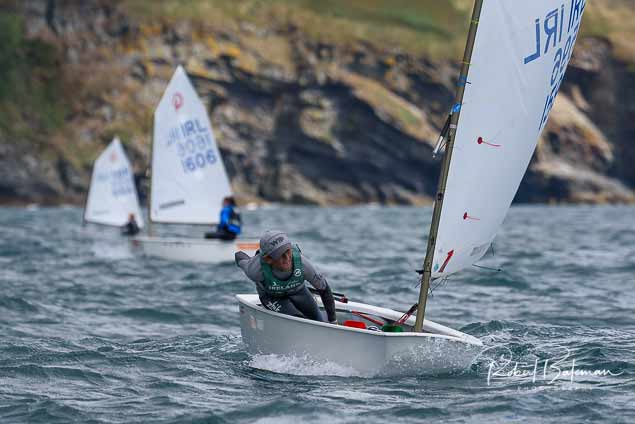 Rising star. Justin Lucas of Royal Cork & Tralee is one of Irish sailing’s most successful youth helms
Rising star. Justin Lucas of Royal Cork & Tralee is one of Irish sailing’s most successful youth helms
And living as I do in an Optimist neighbourhood (half the houses in our road seem to have evidence of at least one Optimist dinghy in the family), part of the fascination of Optimist campaigning is its entertainment value for the rest of us. When you see an entire family (including the pooch) heading off for a championship with the total package of support RIB, several Optimists attached here, there and everywhere - with the roof-rack of the SUV also utilized – then you’re really looking at something special, yet we take it for granted.
It’s very much a combined effort, and that is something which we see manifested in other successful classes such as the close-knit Flying Fifteens in Dun Laoghaire, and the GP 14s nationwide.
GP14 Worlds 2020 at Skerries
In an era when novelty and innovation seem to be the priorities that we seek in vehicles and equipment, the GP 14 is a real curiosity. She goes all the way back to 1949 – yes, she’ll be 70 next year – and her original purpose was that, as a hard-chined boat built in marine plywood, she could be home-built by any reasonably competent Do-It-Yourself enthusiast at a time when DIY was widely popular.
She was called the GP as it meant General Purpose and most assuredly not Grand Prix, with day cruising or even longer non-racing ventures considered an option. But soon, the new boat had acquired a spinnaker, and racing was on the agenda and moving rapidly towards the top. It has stayed there ever since as the GP 14’s main purpose in life.
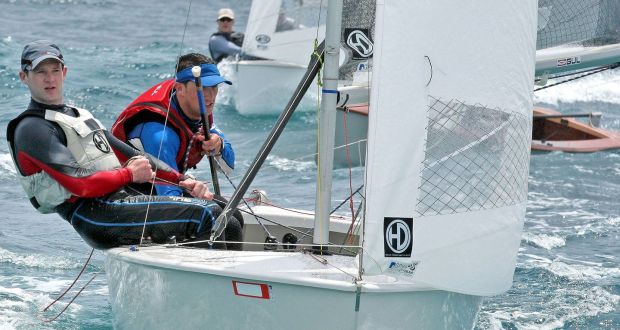 Andy Davis (left) and Greystone SC’s Shane MacCarthy on their way to winning the GP 14 Worlds 2016
Andy Davis (left) and Greystone SC’s Shane MacCarthy on their way to winning the GP 14 Worlds 2016
Many new dinghy designs have appeared since 1949 to promote fresh classes, yet the GP 14 continues to trundle successfully along – more than 14,000 have been built worldwide. And though glassfibre construction has been used in some cases – Shane MacCarthy of Greystones won the GP 14 Worlds in 2016 in Barbados in a GRP GP14 – wood construction continues to be much favoured, and one of the very best builders in the world is Alistair Duffin of East Belfast, who succeeded his father Gerry in the business of creating exquisite wooden boats which are also race-winners.
 The unmistakable look of a Duffin GP14 hull – this one won the Worlds in 2012
The unmistakable look of a Duffin GP14 hull – this one won the Worlds in 2012
His boat-building skills are such that other classes try to avail of his services when there’s the tiniest gap in his GP 14 orderbook – at the moment he’s putting a new deck on a Dublin Bay Mermaid, evidence of another of Ireland’s much-loved older classes finding itself with a new lease of life.
One aspect of such classes is that they give you the feeling of being in one great big family, and certainly in the GP14s in particular, the family thread runs strong, with parents as readily crewing for children as the other way round.
The class is renowned for its provision of good value for its members. This was particularly apparent when the GP 14 Worlds of 2014 was held at East Down Yacht Club on Strangford Lough. The renowned Norman Lee of Greystones was among those taking part with his impressive compact largely self-created equipage of campervan-cum-workshop with boat and gear and spares, all of it on site and typical of a class where a monumental yet quietly effective community effort was needed each day to get the fleet – almost exactly a hundred in all – neatly away for each day’s racing.
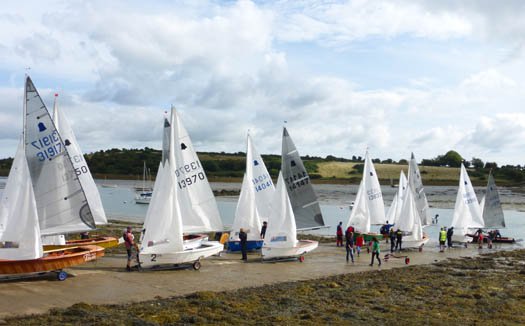 Fleets at most of the biennial GP 14 Worlds are so large that a convenient beach can be very useful, but in 2014 at East Down YC on Strangford Lough, they had to rely on a well-organised routine down a long slipway. Photo: W M Nixon
Fleets at most of the biennial GP 14 Worlds are so large that a convenient beach can be very useful, but in 2014 at East Down YC on Strangford Lough, they had to rely on a well-organised routine down a long slipway. Photo: W M Nixon
This sense of readily-supported group effort within GP 14 Ireland reached a new level in 2016, when the Worlds were set for Barbados in March. The prospect of Caribbean sailing at the tail end of the Irish winter was a mighty attraction, but the logistics of it would have been beyond most classes. Yet the unrivalled community spirit within the Irish GPs saw 22 boats being taken Transatlantic in a well co-ordinated container movement combined with an affordable travel and accommodation package which was negotiated though sensible group action, and planning well ahead.
The fact that in some magnificent racing the new GP 14 World Champion was to emerge as Shane MacCarthy of Greystones, crewed by Andy Davis, was the perfect finishing touch to a great adventure, and a timely reminder that the Irish GP 14 class has had its World Champions in the past, with Bill Whisker and Jimmy McKee of Ballyholme winning in 1975, while Mark and Paul Fekkes from Larne won in 1991.
Thus the main international focus for the Irish class this season has been the recent GP 14 Worlds in southwest England at Mounts Bay in Cornwall, where a convenient gently sloping beach provides the exceptional launching facilities required by a fleet of 117 boats, for which 17 travelled from various Irish centres, while total Irish participation was pushed above the 20 mark with our GP 14 sailors who currently live in Britain.
 The distinctive shape of St Michael’s Mount dominates the race area during the recent GP14 Worlds at Mounts Bay in Cornwall. Irish helms took second and fourth in the 117-strong fleet.
The distinctive shape of St Michael’s Mount dominates the race area during the recent GP14 Worlds at Mounts Bay in Cornwall. Irish helms took second and fourth in the 117-strong fleet.
Inevitably, defending champion Shane MacCarthy was something of a marked man, and going into the final race he seemed assured of the bronze. But he was pushed into fourth, and the best of the Irish was Ross Kearney with the Silver, sailing under the burgee of the Royal North of Ireland YC at Cultra, and crewed by Ed Bradburn of South Staffs SC.
After Shane MacCarthy in fourth, next best of the Irish was Ger Owens of Royal St George YC at 9th. He is one of those leading Irish dinghy sailors who is equally renowned for his successes in other boats, most of them of more modern type, yet he reckons that for sport and value, keeping a GP 14 in trim and having someone as able as regular crew Melanie Morris to campaign with makes it well worth the effort.
In a fleet of this size, everyone will have found their level where the sport is at its best, and age is no barrier. We wouldn’t dream of even guessing at the age of Curly Morris of Larne, but he has been sailing GP 14s for as long as we’ve known him, which is very far back into the previous millennium. Yet there he was at Mounts Bay, merrily sailing around with all his replacement joints in reasonable working order, and taking 19th overall with Laura McFarland of Newtownards SC as his crew.
 Supersenior Sailor – veteran Curly Morris is as keen as ever. Photo: Robert Bateman
Supersenior Sailor – veteran Curly Morris is as keen as ever. Photo: Robert Bateman
As for top all-women crew, that went to Katy Dwyer and Michelle Rowley of Sutton Dinghy Club, who were comfortably into the top half at 41st, which gave them a solid fifth in the Silver Fleet.
With full-on across-the-board participation by the Irish entries as events concluded at Mounts Bay in the first week of August, there’s been little enough time to re-charge batteries before this weekend’s Sligo gathering. But with GP 14 Ireland in the build-up to another big one on the home front within two years, the momentum is on, with the count-down already under way towards the GP 14 Worlds 2020 at Skerries, where this year in July they’ve already staged the Leinsters, won by Shane MacCarthy with Ger Owens second and Alan Blay and David Johnston of Sutton third.
This will put a double-focus on MacCarthy at Sligo, as he’s defending National Champion, having won at Ballyholme last year. So all that’s needed in Sligo is a relenting of the weather to set the stage for the sort of racing the GP 14s relish.
It speaks volumes of a class in good heart, and with GP14 Ireland now having David Cooke of Skerries as President, there’s a strong home team in place to provide a World Championship worthy of the competitors, while on the boat front, the word is that Alistair Duffin’s order book for new GP 14s is well-filled to 2020.
World Sailing Championships on the Fingal Coast
It all means that 2020 is going to be quite a year for World Championships on the Fingal coast, as fourteen miles to the south at Howth, one of HYC’s main events for 2020 will be staging the Fireball Worlds.
 The National YC’s John Lavery on the helm and David O’Brien on the wire, on their way to winning the Fireball Worlds 1995 in Dublin Bay. The Fireball Worlds 2020 will be staged at Howth. Photo: Shane O’Neill
The National YC’s John Lavery on the helm and David O’Brien on the wire, on their way to winning the Fireball Worlds 1995 in Dublin Bay. The Fireball Worlds 2020 will be staged at Howth. Photo: Shane O’Neill
While the Fireball Class doesn’t have the same national coverage in Ireland as the GP 14, it continues to be a significant international force, and of course Irish faith in the Fireball is still sustained by memories of the World Championship in Dublin Bay in 1995, won by John Lavery and David O’Brien of the National Yacht Club.
The very idea that the coast of Fingal would be hosting two world championships at two different venues within the county in 2020 would have been seen as far-fetched back in 1995. But population growth has seen club development across the board in the north county – think, for instance, of the remarkable growth of Rush Sailing Club’s success – and the area’s lack of commercial shipping is a real boon when Dublin Port’s increasing activity keeps the Bay’s shipping lanes busier than ever.
Then, too, when the Atlantic weather is excessively flexing its muscles, the well-islanded coast of Fingal’s great sailing water has all of Ireland to provide a lee when the big westerlies roar across country to make racing events impossible on open water on the Atlantic seaboard.
Half Ton Classics Worlds at Nieuwpoort
So between Optimists and GP 14s and Fireballs, there is much to cheer us in the current and future scene. And as for cruiser racing, there may have been a glitch, but in the Irish Sea ISORA soldiers on, and we’ve two Howth boats – Dave Cullen’s Checkmate XV and Jonny Swann’s Harmony – in with a shout in next week’s Half Ton Classics Worlds at Nieuwpoort in Belgium. Life goes on.
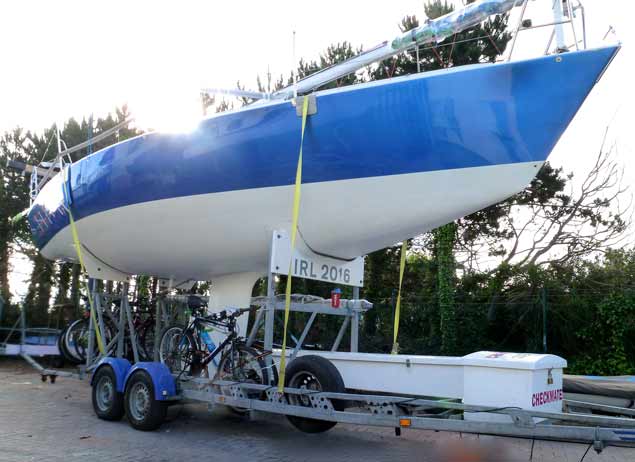 All packed up, and ready to go….Dave Cullen’s classic Half Tonner Checkmate XV road-ready at Howth for departure to Nieuwpport in Belgium and the Half Ton Classic Worlds which start on Monday. Photo: W M Nixon
All packed up, and ready to go….Dave Cullen’s classic Half Tonner Checkmate XV road-ready at Howth for departure to Nieuwpport in Belgium and the Half Ton Classic Worlds which start on Monday. Photo: W M Nixon
 No, you weren’t seeing things – Checkmate XV travels with five crew bicycles, as getting around some yacht harbours takes longer than you think, and the exercise is good for them. Photo: W M Nixon
No, you weren’t seeing things – Checkmate XV travels with five crew bicycles, as getting around some yacht harbours takes longer than you think, and the exercise is good for them. Photo: W M Nixon
 Jonny Swann’s Harmony, overall winner of the all-comers Harbour Race in Volvo Cork Week, will also be representing Howth in the Half Ton Championship in Belgium. Photo: Robert Bateman
Jonny Swann’s Harmony, overall winner of the all-comers Harbour Race in Volvo Cork Week, will also be representing Howth in the Half Ton Championship in Belgium. Photo: Robert Bateman
Optimist Dinghy Nationals at Kinsale Photo Gallery (Junior Fleet)
It was a challenging day on the water in gusty conditions on day one of the Davy Irish Optimist Nationals in Kinsale Yacht Club. Scroll down for photo gallery below.

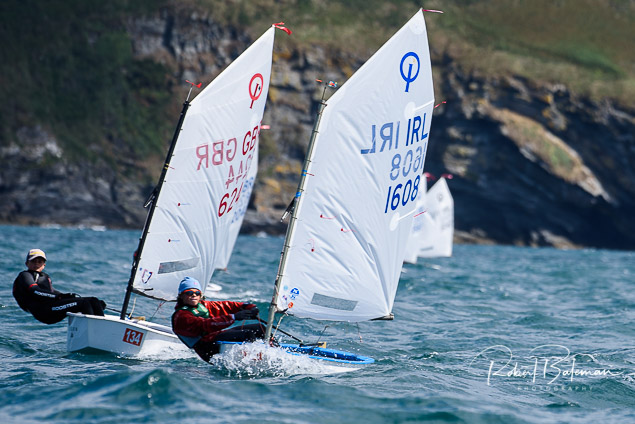
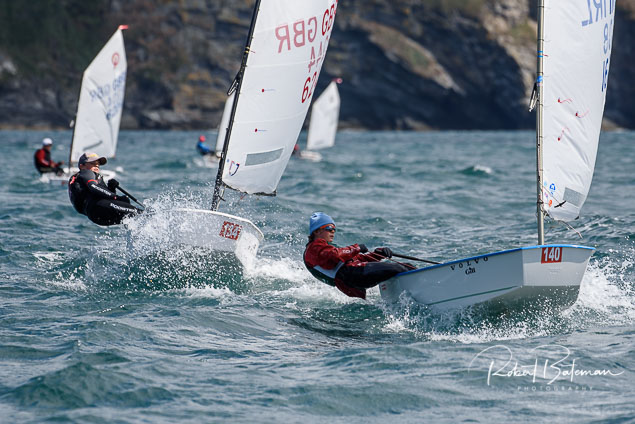
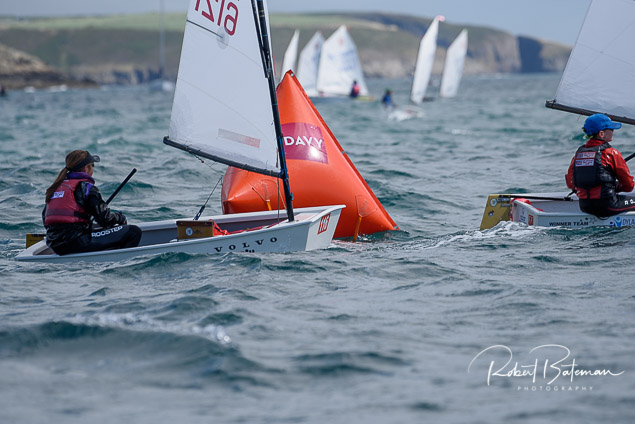
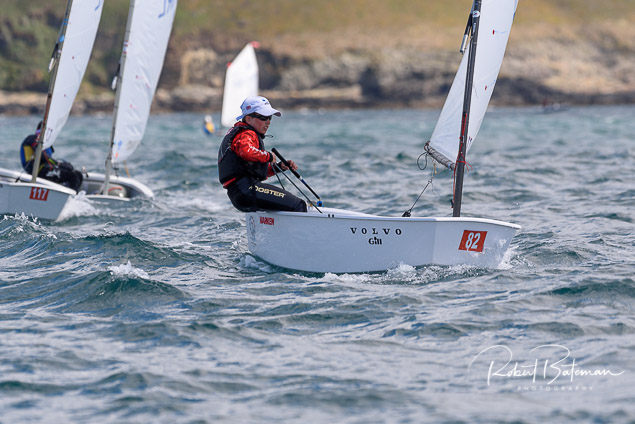
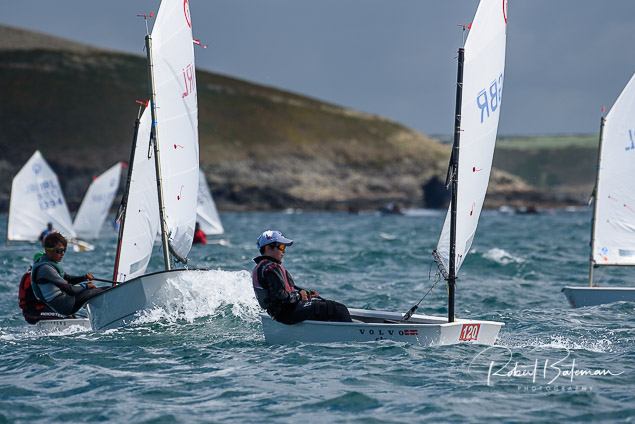
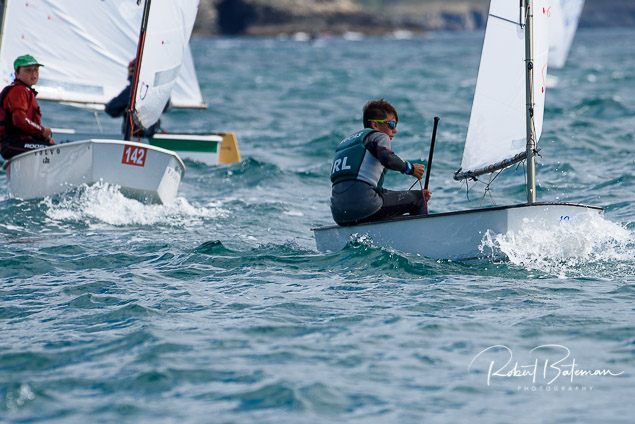

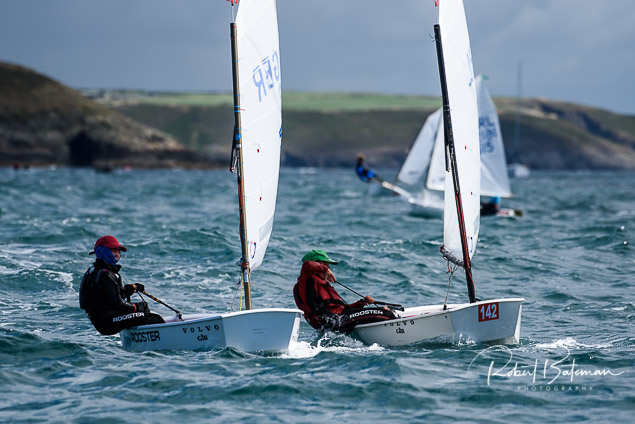
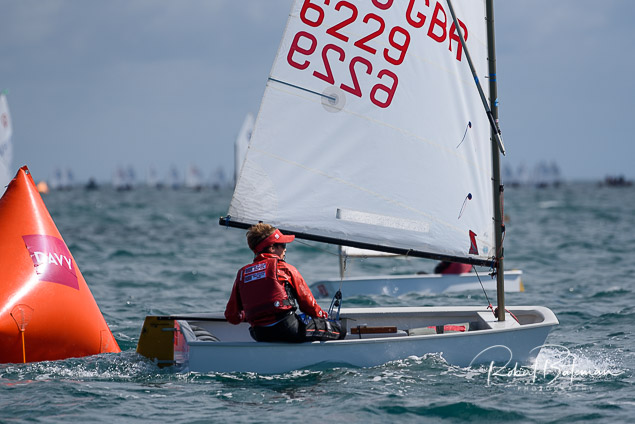

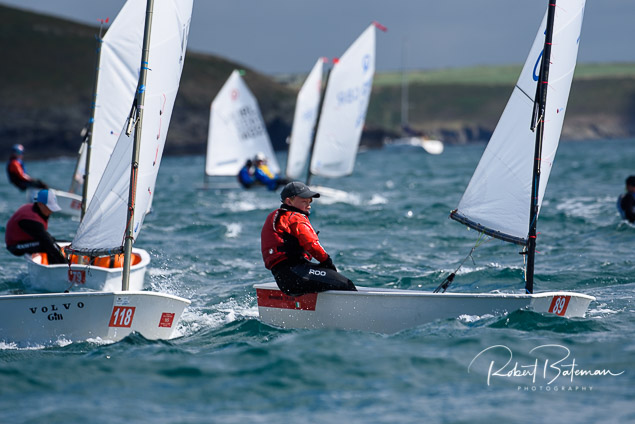
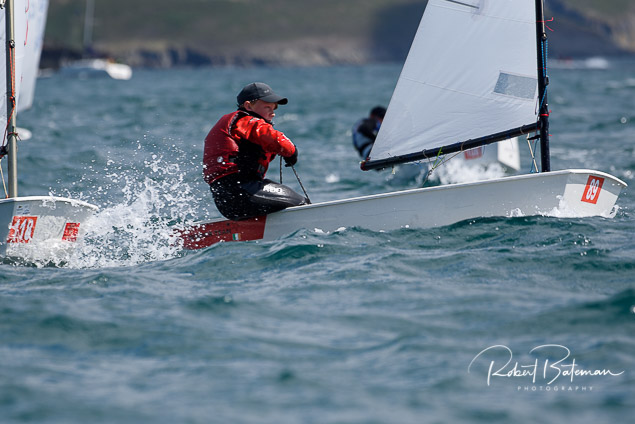



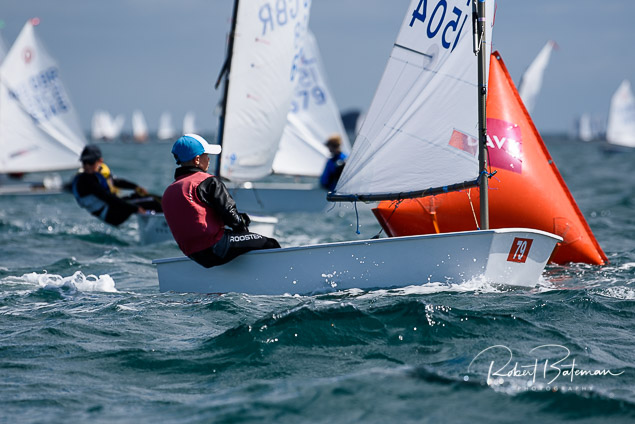
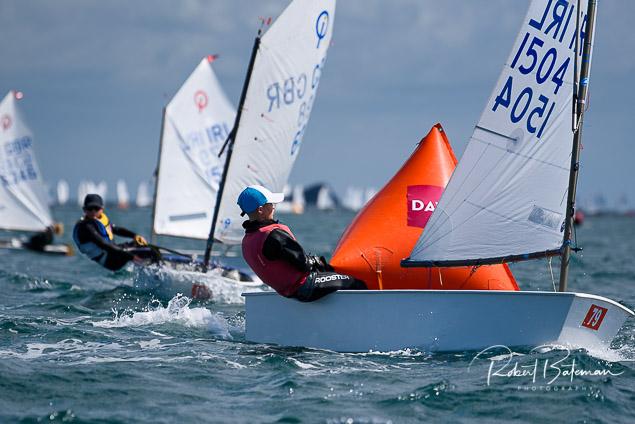

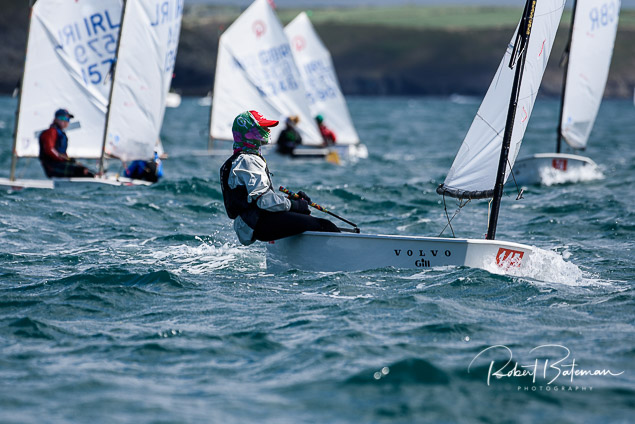
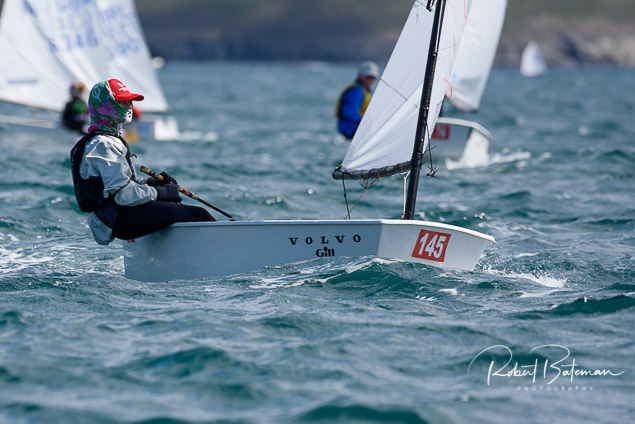


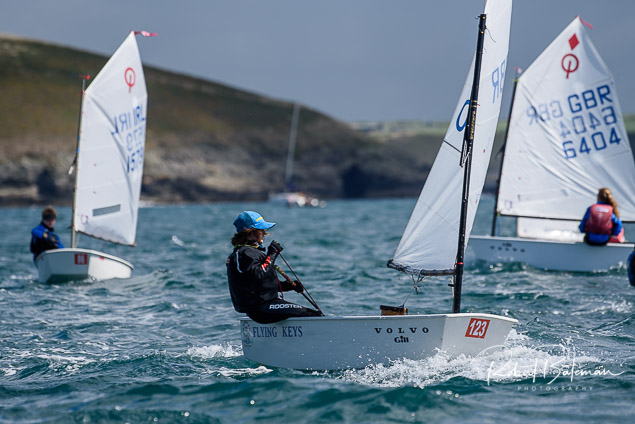
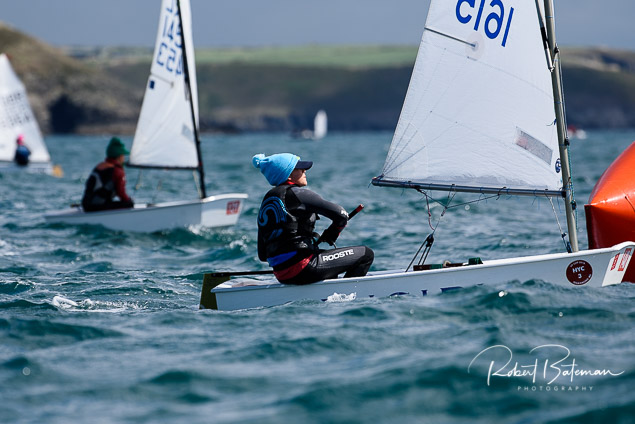
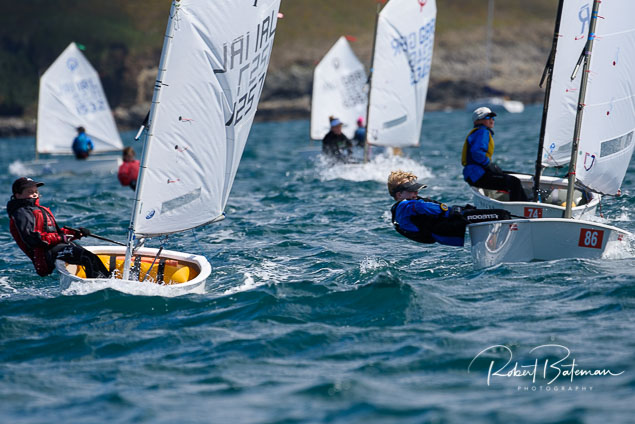
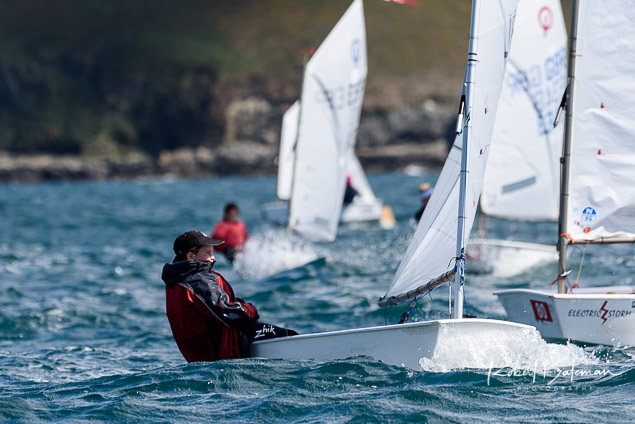

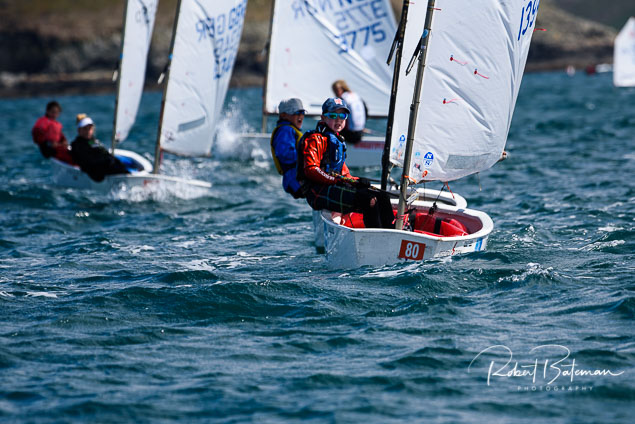
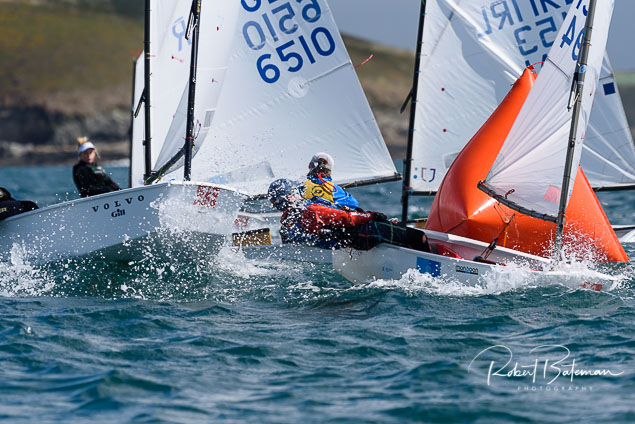
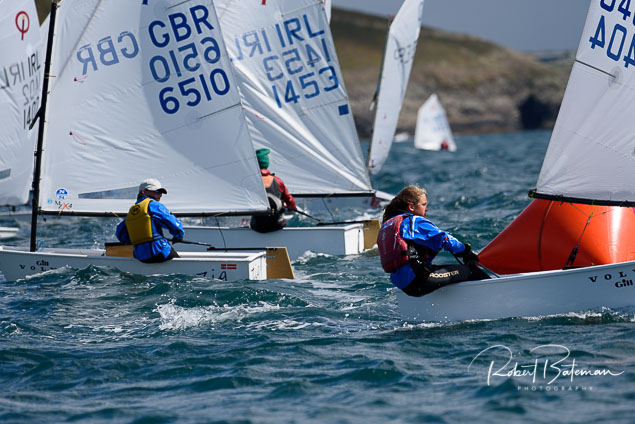
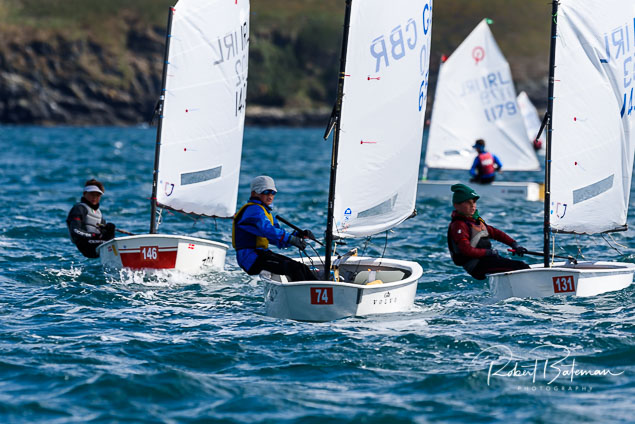
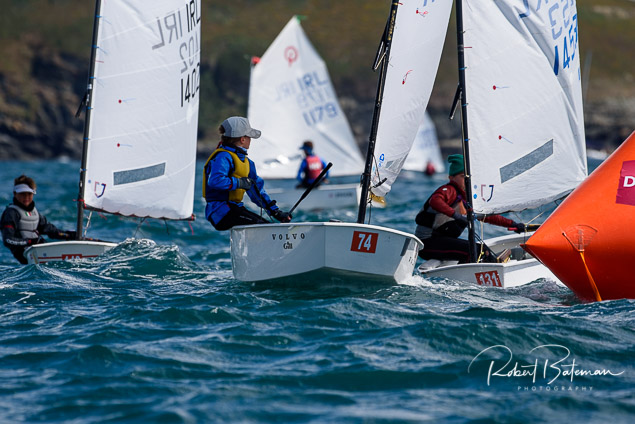
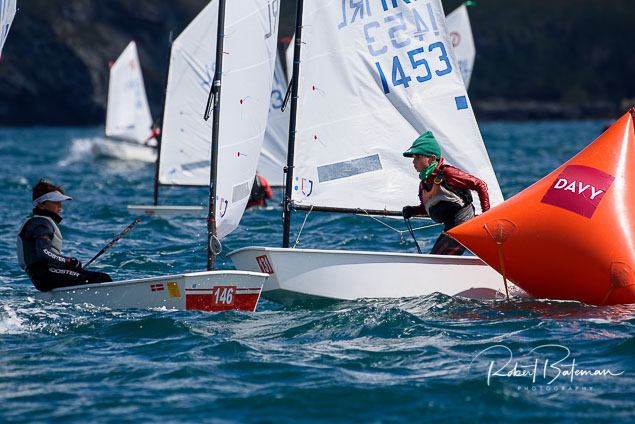
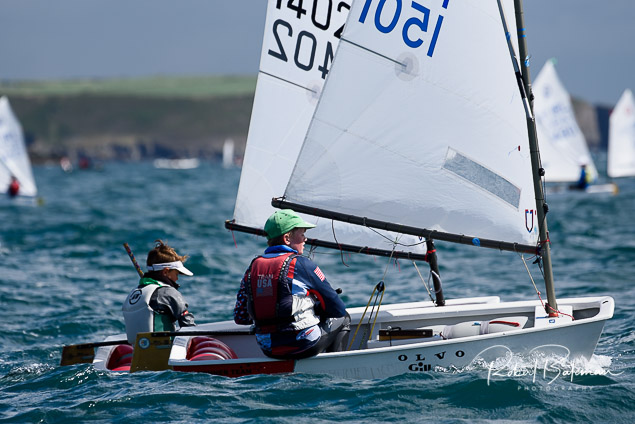
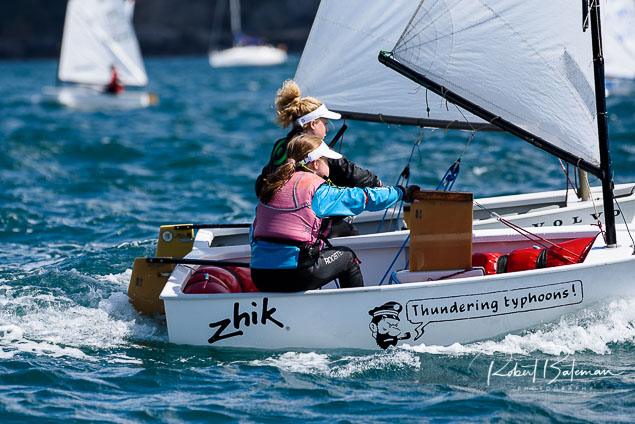

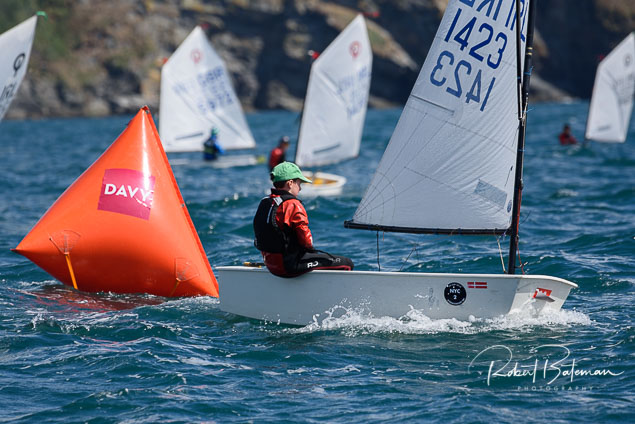



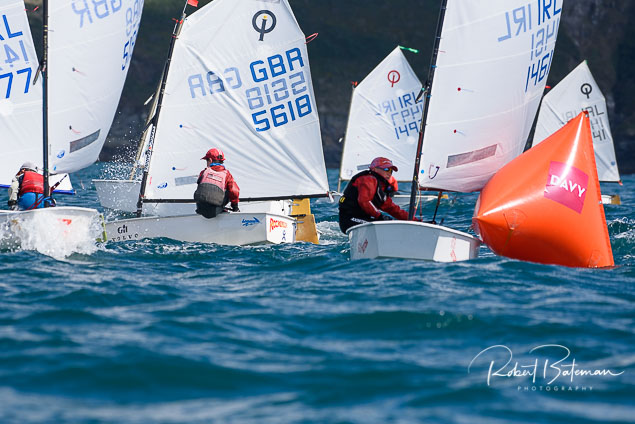
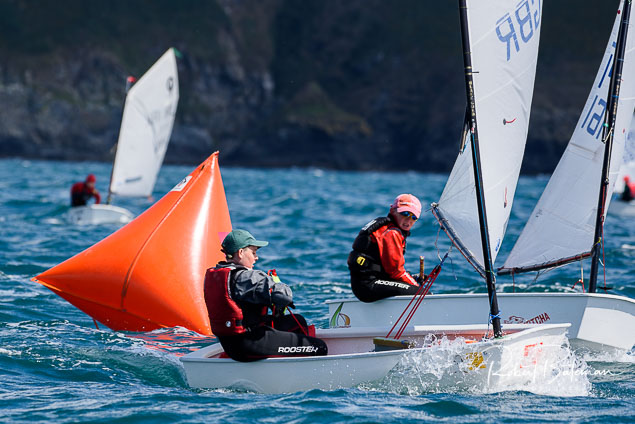
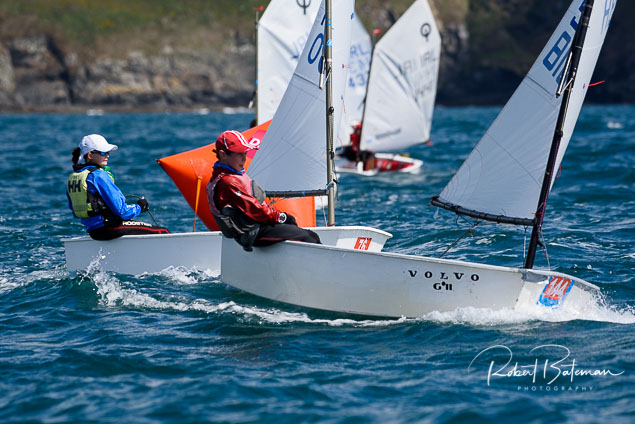
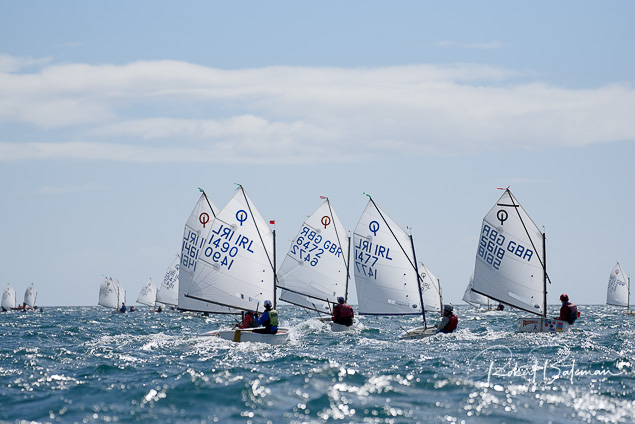


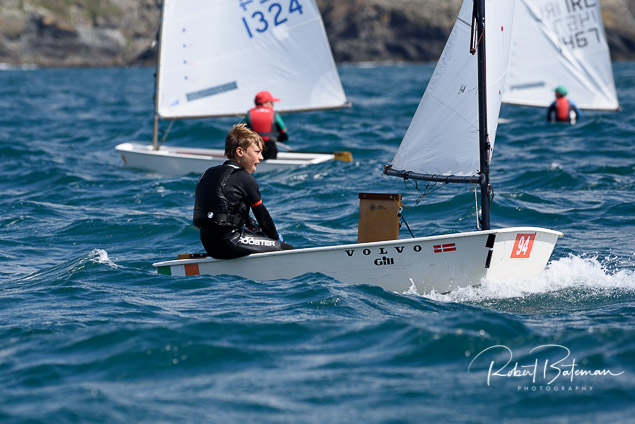


Optimist Dinghy Nationals at Kinsale Photo Gallery (Senior Fleet)
Royal Cork Yacht Club's Justin Lucas leads the Davy Irish Optimist Nationals in Kinsale Yacht Club after three challenging races in gusty conditions on day one. Scroll down for our photo gallery by Bob Bateman below.
 Fleet leader – Justin Lucas of RCYC Photo: Bob Bateman
Fleet leader – Justin Lucas of RCYC Photo: Bob Bateman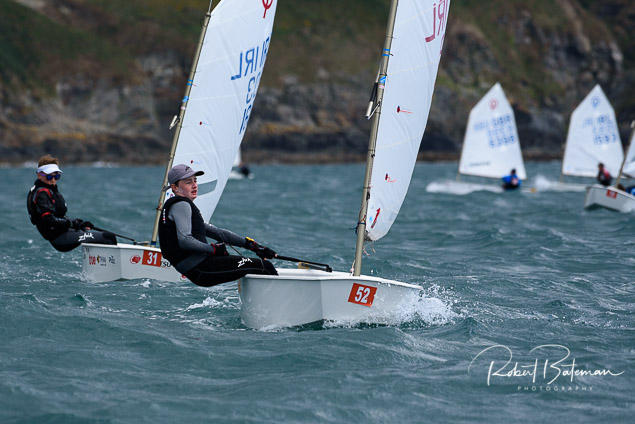

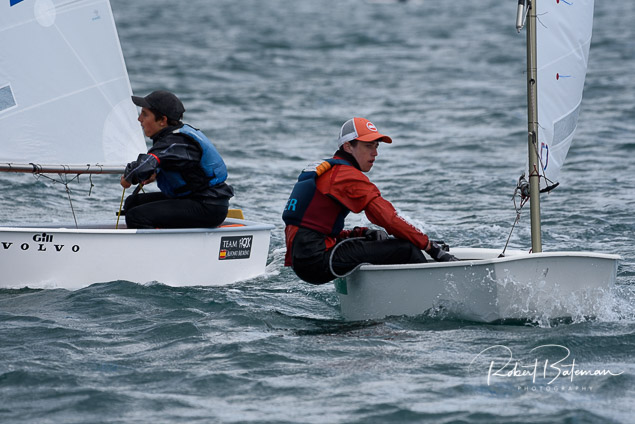
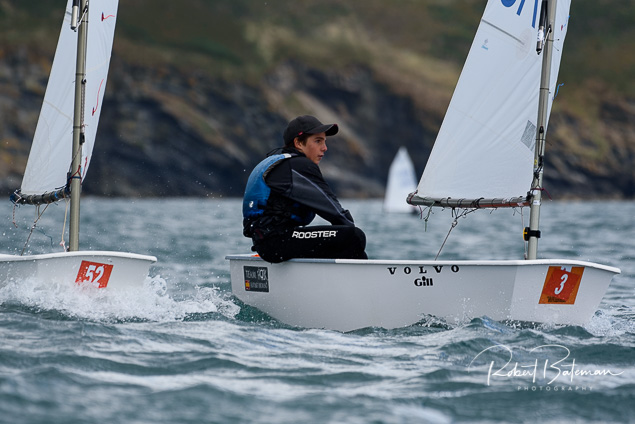






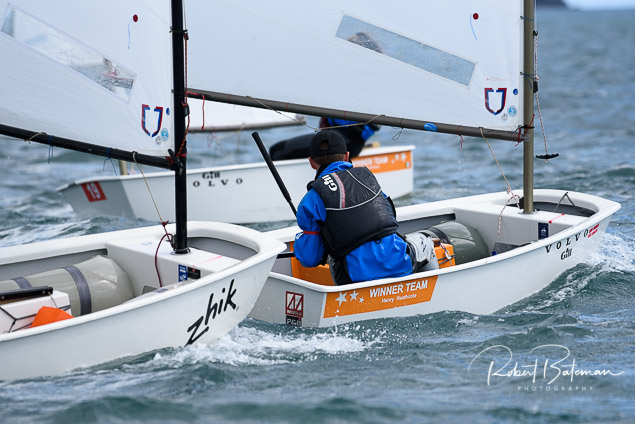
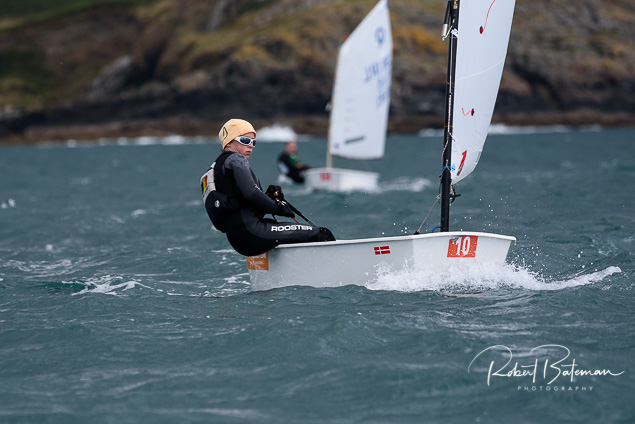


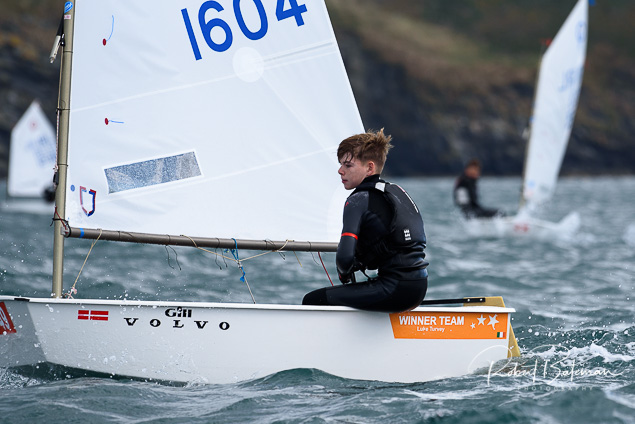

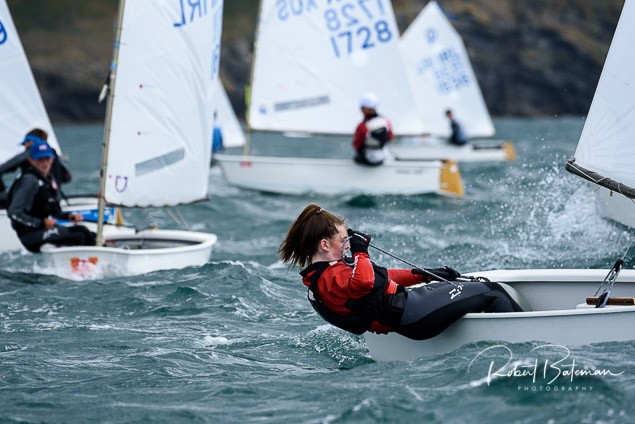

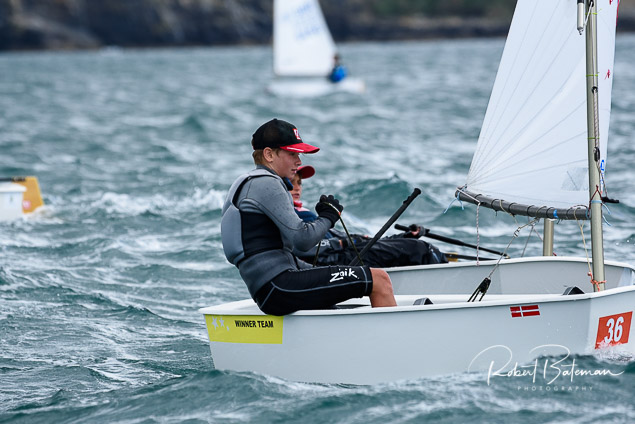
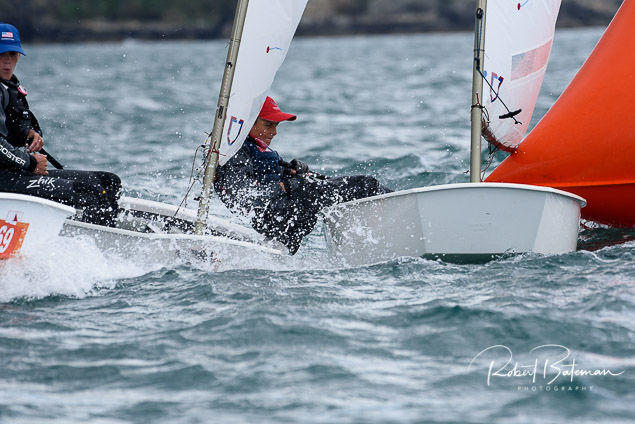
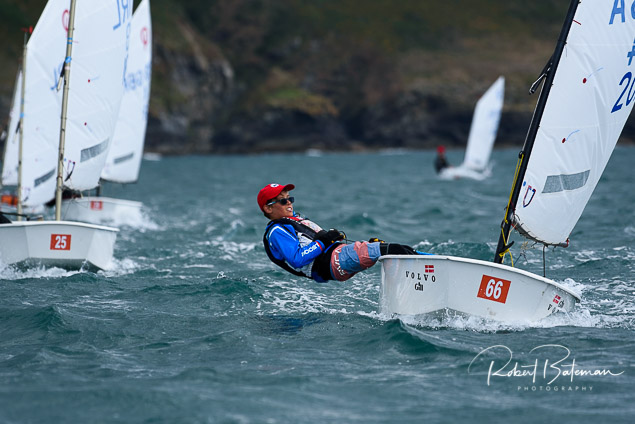

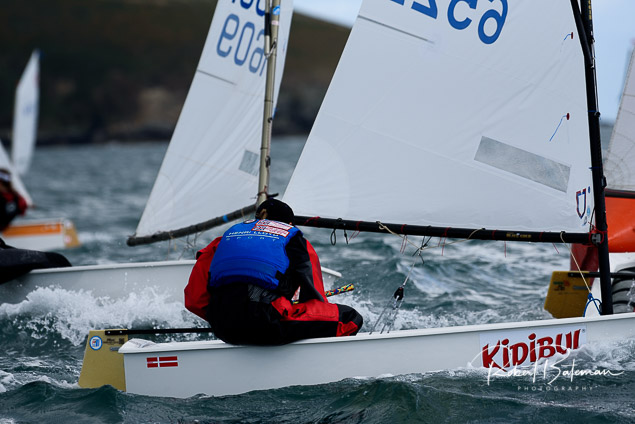
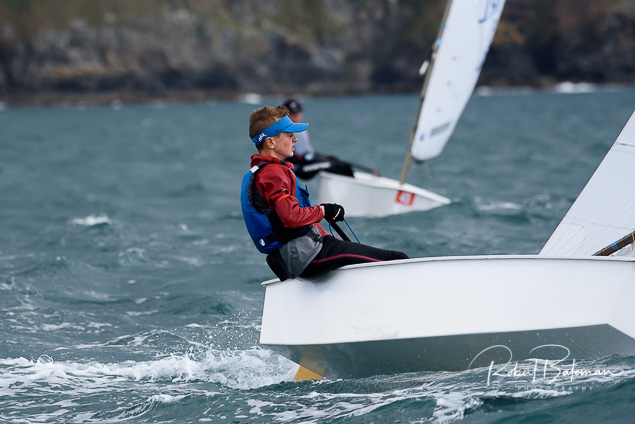

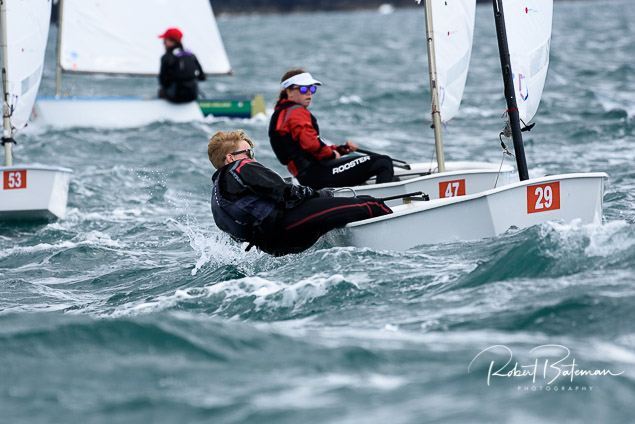

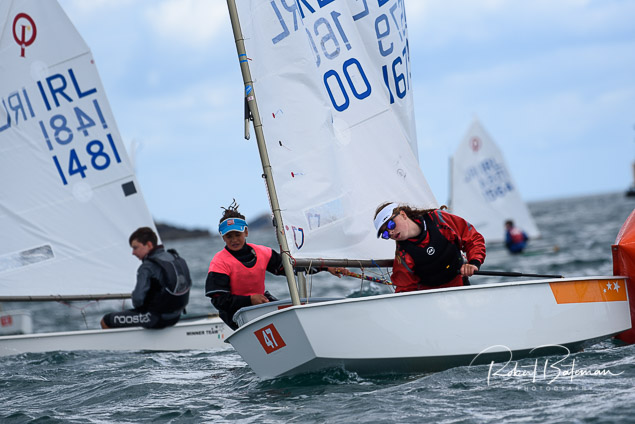




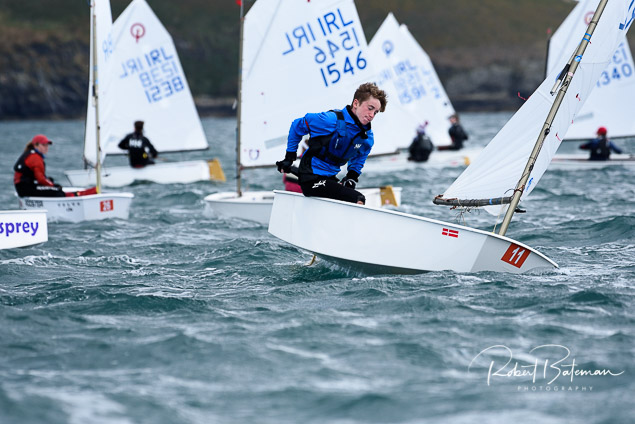
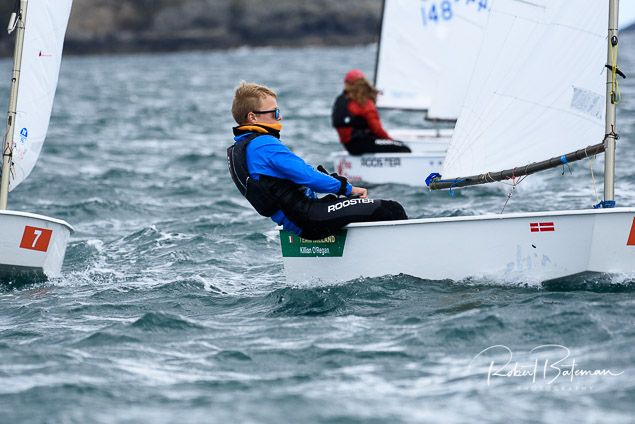
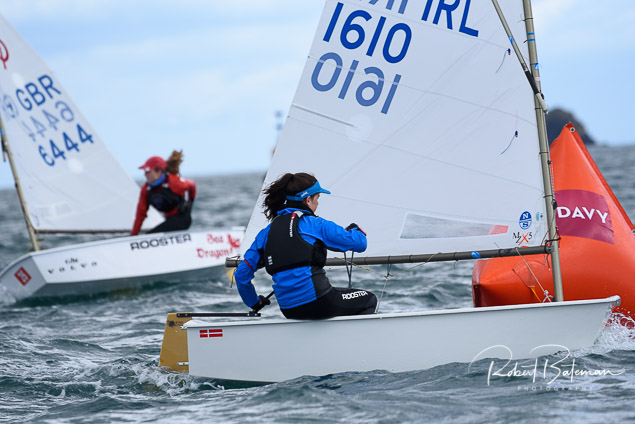
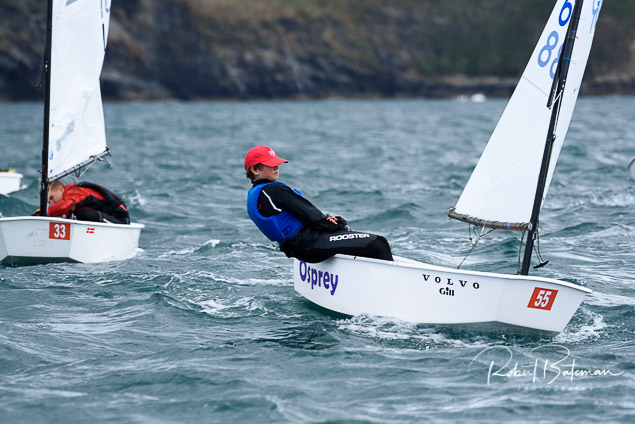



Kinsale Yacht Club Optimist Nationals Attract 178 Entries
The opening ceremony for the 2018 Davy Irish Optimist National and Open Championships took place tonight at Kinsale Yacht Club writes Bob Bateman.
178 entries are registered for the event running from August 16th-19th with sailors coming from France, Spain, USA, Cayman Islands, Australia, Belgium, GBR, and Ireland.
The Race Director for the Event is John Stallard. Principle Race Officer is Peter Crowley. Race Officer for the Regatta Fleet is Denis Kieran.
 Caribbean music at the Optimist launch in Kinsale Photo: Bob Bateman
Caribbean music at the Optimist launch in Kinsale Photo: Bob Bateman

 Rocco Wright of HYC and James Dwyer of RCYC & KYC
Rocco Wright of HYC and James Dwyer of RCYC & KYC The Howth YC team
The Howth YC team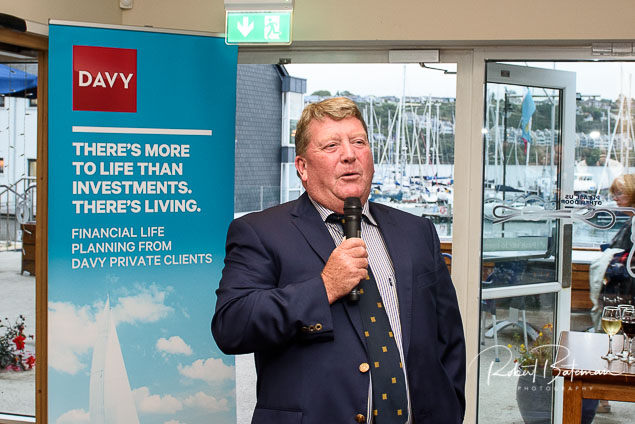 David O'Sullivan, Commodore of KYC
David O'Sullivan, Commodore of KYC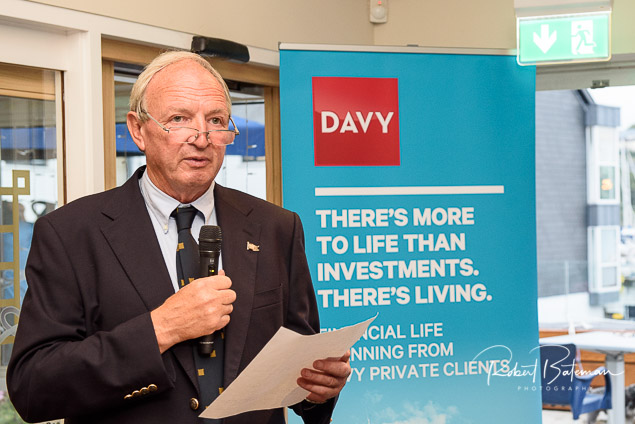 John Stallard, KYC Event Director
John Stallard, KYC Event Director
The National Yacht Club had great success in the Optimist Ulster Championships which took place in Malahide Yacht Club last weekend writes Frieda Forde.
Twenty four sailors from the NYC – some of whom are junior members of other clubs as well – took part in this event across three fleets.
There was great NYC representation at the prizegiving with the following results:
Senior Fleet
Sam Ledoux finished 2nd place overall, Leah Rickard finished 3rd place overall and 1st Girl in the Senior Gold Fleet, Conor Gorman finished 4th place overall, Fiachra Mc Donnell finished 5th place overall, Rian Geraghty - Mc Donnell finished 6th place overall, Luke Turvey finished 8th place overall, Hugh Turvey finished 10th place overall and Nathan van Steenberge finished 13th place overall. Lauren O’Callaghan finished in 4th place in the Senior Silver Fleet.
Junior Fleet
Rocco Wright finished 1st place overall, Clementine van Steenberge finished 3rd place overall and Lucia Cullen finished 8th place overall.
Regatta Fleet
Ava Ennis finished 2nd place overall, Caoilinn Mc Donnell finished 3rd place overall, James Hall finished 4th place overall, Lizzie Hall finished 6th place overall, Kate Flood finished 7th place overall, Grace Gavin finished 12th place overall and Ciara O’Sullivan finished 14th place overall.
Two teams were also presented with their kit for forthcoming international regattas.
The European Team with NYC sailors Leah Rickard, Nathan van Steenberge, Rocco Wright and Sam Ledoux.
The IDT Polish Team with NYC sailor Lucia Cullen
With five top three results out of six races sailed, Howth Yacht Club & RStGYC youth Johnny Flynn was the clear winner of the Ulster Optimist Championships sailed at Malahide Yacht Club over the weekend by a large margin of 21–points.
Dublin sailors took nine out of the ten top places with National Yacht Club sailors, in particular, occupying from second to sixth overall.
In a fine turnout of 126–boats, there was 55 in the main fleet, 50 in the junior fleet and 21 in the Regatta fleet.
Although youth champion Justin Lucas of Tralee Bay started the event well with a race win, 'BFD' and 'DNC' results scored in races three and four ruled him out of overall contention and he finished 15th.
Ulsters 2018 Optimist Championships - Main Fleet
1st IRL 1607 Howth Yacht Club & RStGYC youth Johnny Flynn M 13 Senior Gold 2 2 2 (10) 2 3 11
2nd IRL 1350 Sam Ledoux NYC M 13 Senior Gold 8 4 3 3 (15) 14 32
3rd IRL 1564 Leah Rickard NYC F 15 Senior Gold 4 3 (14) 5 12 9 33
4th IRL 1475 Conor Gorman NYC M 15 Senior Gold 9 (14) 4 2 10 10 35
5th IRL 1565 Fiachra McDonnell NYC M 13 Senior Gold 10 5 (21) 1 13 7 36
6th IRL 1588 Rian Geraghty-McDonnell NYC M 15 Senior Gold 6 11 (56 DNC) 4 9 6 36
7th IRL 1586 James Dwyer Matthews RCYC & KYC M 14 Senior Gold 12 15 1 (17) 5 5 38
8th IRL 1604 Luke Turvey HYC & NYC M 13 Senior Gold 15 1 (29) 18 7 1 42
9th IRL 1606 Emily Riordan RStGYC F 15 Senior Gold 14 9 (17) 9 6 4 42
10th IRL 1603 Hugh Turvey HYC & NYC
Ulsters 2018 Optimist Championships - Junior Fleet
1st IRL 1608 Rocco Wright HYC & NYC M 12 Junior Gold (2) 1 1 1 1 1 5
2nd IRL 1597 Jessica Riordan RStGYC F 12 Junior Gold 3 3 2 2 3 (4) 13
3rd IRL 1598 Clementine van Steenberge NYC F 12 Junior Gold (5) 5 4 5 2 3 19
4th IRL 1587 Alana Twomey RCYC & CHSC F 12 Junior Gold (6) 6 5 4 4 2 21
5th IRL 1502 Russell Bolger RStGYC M 12 Junior Gold 4 4 3 (8) 8 5 24
6th IRL 1528 Peter Williams RStGYC & CHSC M 12 Junior Gold 7 7 6 6 9 (11) 35
7th IRL 1576 Emmet Lucas RCYC M 12 Junior Gold 8 (15) 8 12 7 7 42
8th IRL 1580 Lucia Cullen NYC & RStGYC F 12 Junior Gold (13) 8 9 7 10 8 42
9th IRL 1473 Matty Keane RIYC M 12 Junior Gold 10 9 10 9 (12) 6 44
10th IRL 1463 Ben O Shaughnessy RCYC M 12 Junior Gold 1 2 (51 BFD) 3 6 35 47
Youth Champion Sailor Justin Lucas To Contest Ulster Optimist Championships at Malahide
Optimist Youth pathway champion Justin Lucas, who became Afloat.ie Sailor of the Month for his performance on Dublin Bay in April, will be in action at the Ulster Championships at Malahide Yacht Club next weekend.
The fourteen–year–old Tralee Bay and Royal Cork ace is part of a 140–boat fleet expected for the Joe Duffy Motors sponsored dinghy event at the Broadmeadow.
Entries are now closed for the two day regatta on May 19 and 20.
#Optimist - Justin Lucas of the Royal Cork and Tralee Bay placed second at the Magic Marine Easter Regatta in the Netherlands yesterday (Monday 2 April).
A long weekend of sailing on the Braassemermeer northeast of Leiden saw Lucas finish just two points behind the winner, Kerem Erkmen of Turkey, in the final tally.
The two days also saw a strong showing by fellow Team Ireland Optimist sailor Harry Twomey (Royal Cork/Crookhaven Harbour), who was second before leaving early to prepare for trials.
Johnny Flynn, of Howth Yacht Club, came into the final day in third and finished a respectable 15th.


























